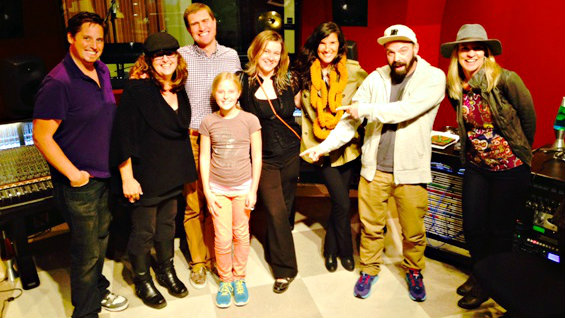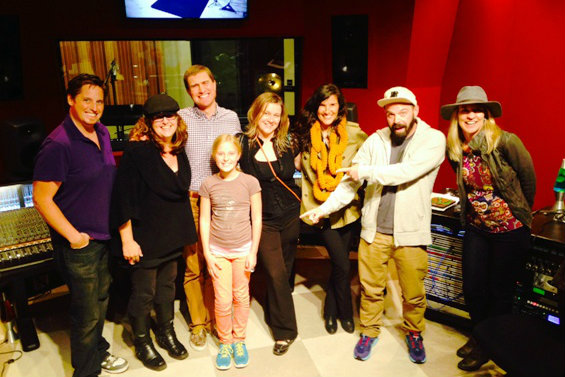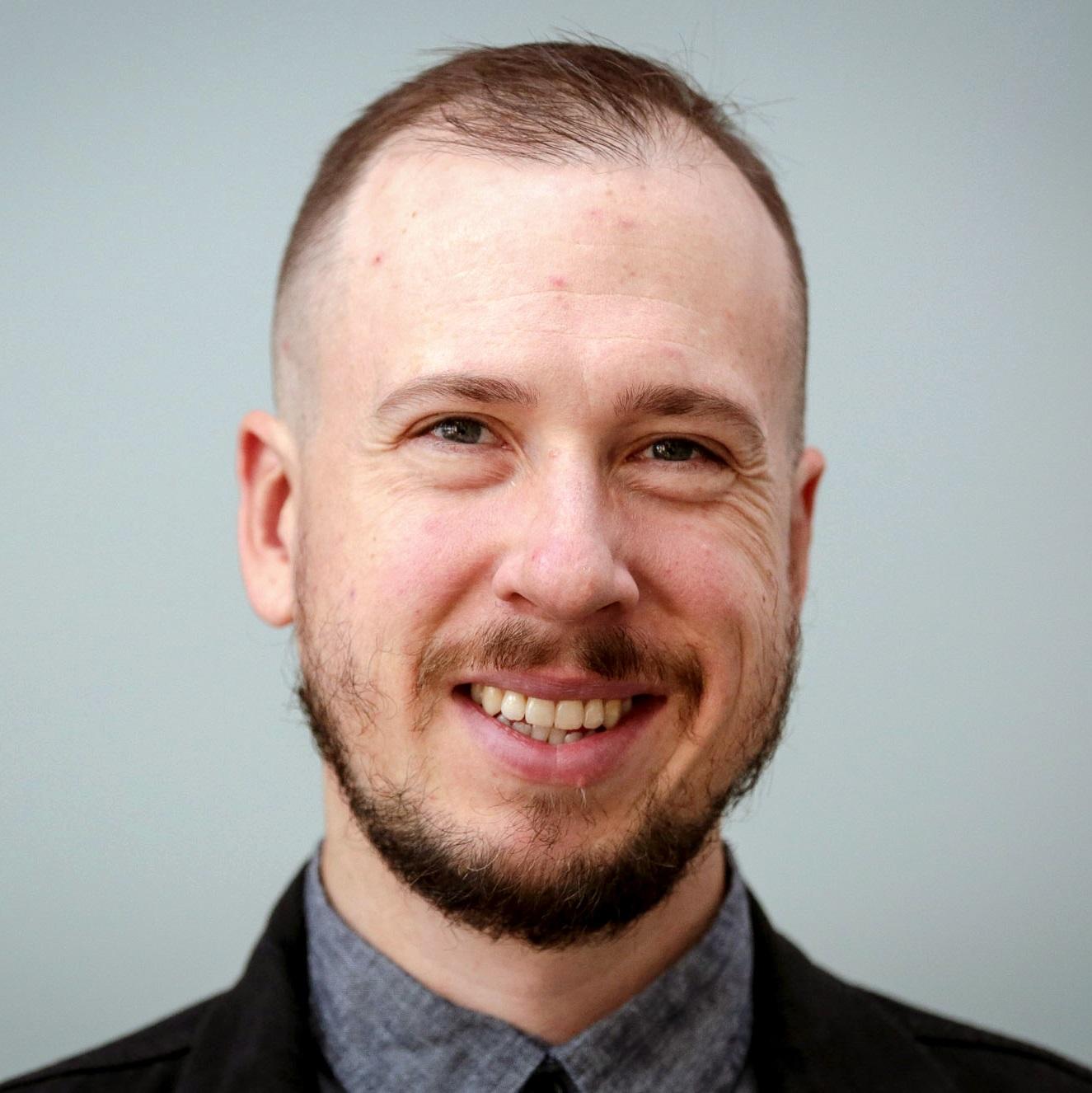

Corrigan also spends a lot of time thinking about how play brings people together. Now a 33-year-old creative strategist, the Denver transplant still reconnects with relatives over video games when they reunite. That includes his gamer nephew, who shouts “Oh heck yeah!” to punctuate any victory, large or small. This signature phrase inspired the name of Corrigan’s current project, which aims to connect strangers in public via video games.
This summer, Oh Heck Yeah will transform two downtown Denver blocks into a street arcade. In collaboration with a number of local entities like the Denver Theatre District and Downtown Denver Partnership, Corrigan’s team will bring this idea to life using large LED screens, building projections, custom video games and social media. The Colorado Symphony will even record an original soundtrack composed by Denver's William Hill at Boettcher Concert Hall on Wednesday, February 5, at 9 a.m. The music will be available for free download.
While most modern video games allow users to plug into a global network from the comfort of their own homes, Corrigan says his event shifts the paradigm by inviting participants into a public space to plug into their local network. Participants will compete using their smart phones and even their bodies as controllers.
Oh Heck Yeah sets up shop along Champa Street in Denver, reaching from the 16th Street Mall to 14th Street, each Thursday and Saturday from June 7 to July 26. Bolstered by a $200,000 grant from ArtPlace America, the interactive arcade’s overall price tag reads $750,000. Corrigan estimates that there’s $200,000 left to raise.
To help cover costs, he has organized a series of monthly events serving as fundraisers that also offer the public a taste of what’s to come this summer. Oh Heck Yeah takes over Crave Dessert Bar & Lounge at 5:30 p.m. on Wednesday, Jan. 15. Attendees can play different games projected on the walls and meet the developers, who represent a community of thriving talent based in Denver, Corrigan says.
Colorado Public Radio caught up with Corrigan prior to the event.
CPR: How did you come up with the concept for Oh Heck Yeah?
Brian Corrigan: Oh Heck Yeah is the accumulation of a few years of testing ideas and building prototypes for the city’s innovation festival, Create Denver Week. The first year we produced a 3-D projection mapping event using an exterior wall of the Ellie Caulkins Opera House with the help of Legwork Studio and Kris Collins. The following year we worked with Mode Set to produce a video game mashup of Pong and Space Invaders, played using a Microsoft Kinect and the Denver Theatre District’s LED screen.
Some say technology puts us in a personal bubble, making the need to connect in the physical world even more important. I agree, but I don’t think it’s necessarily a technology problem as much as it is a design flaw. After these two events, we realized that when designing for the next generation of technology, we should be asking the question: How can we design technology to bring us together?
CPR: The notions of creativity and play are inherent in this effort. Why are these important to you and why did you choose a street arcade as a platform to promote them?
Brian Corrigan: Jane McGonigal, director of game research and development at the Institute for the Future, suggests that when we play games, we tap into positive emotions like curiosity, optimism, creativity and love. Studies show that we are more likely to cooperate with someone in our real lives after we have played a social game with them.
For example, our video game prototype debuted on a rainy night in May to a small crowd braving the weather. As the night progressed, people moving to a downtown destination stopped to play with the people already gathered on the corner. After the game was over, we witnessed complete strangers high-fiving or hugging their opponents, which then led to conversations.
It was in those moments that we realized we could use the power of play to connect people on the street. Public space in a city is ripe for serendipitous interactions that can lead to building friendships or new business opportunities. We see the games as a way to connect people on the street by giving them another reason to interact. For most, it's hard or weird to interact with someone walking down the street. We hope by infusing play into the built-in environment, we can make that easier.
CPR: What makes Denver the right place for Oh Heck Yeah and how will this project transform the city?
Brian Corrigan: Denver’s strength is in its people. They are open, collaborative and talented. Denver’s competitive advantage, when it comes to creativity, is the ability to mix art, design and storytelling with technology. That is a powerful combo and a very hard thing to do well. I believe this works here because people are so collaborative. This project would not happen without the support of the local talent, our partners and the community.
Our theory of change is that by infusing creativity into an existing infrastructure in a way that encourages play, we will build and strengthen the social infrastructure, resulting in a more resilient city. We believe our project’s outcome will produce a more connected and economically integrated community, resulting in increased access to economic opportunity for all, safer streets, and Denver becoming a whole heck of a lot more fun.
CPR: Looking at the bigger picture, what are the implications surrounding community, both within the workplace and in public?
Brian Corrigan: First we have to recognize what is working now. I always say it's no coincidence that the most innovative firms, like Google, have space in the office for their employees to play. They understand the power of play and its contribution to a company’s bottom line. Tim Brown of the product design firm Ideo attributes play to being the secret to creating great work. He sees play as an important part of maintaining a thriving business culture.
A study conducted by software company Intuit predicts that by 2020 more than 40 percent of the American workforce, or 60 million people, will be freelancers, contractors and temp workers. Coworking spaces in both Colorado and the United States are already capitalizing on the shift by offering shared desk space and office amenities to freelancers. But that is only one piece to supporting our new economic output.
Public spaces have the opportunity to be a more relevant resource by providing the community a place to work, play and connect. Carol Coletta, vice president of community and national initiatives at the Knight Foundation, says, “It’s incumbent upon those who make public space to be asking the same questions as those who make corporate workplaces.” By framing the design of our shared spaces in this way, we can better understand what connects people and ideas.
CPR: Oh Heck Yeah will use a “transmedia” approach. What does this mean and how does it relate to the narrative components threaded throughout the games?
Brian Corrigan: Transmedia is telling the same story across multiple platforms. For us, our transmedia storytelling platform consists of LED screens, our website, social media and projections on buildings. For example, we are creating Twitter profiles for some of the video game characters so the public can interact with and be a part of the story.
The two city blocks will be full of street art that will transport players to a modern game world. And the experience doesn’t stop with just games. We are working with many different cultural partners and artists to extend the gaming story with karaoke, live music, dancing, theatre and comedy. Since the project is in a theatre district, we see Oh Heck Yeah as pioneering a new type of theatre that takes the story outside of the building, infuses it into the street, and encourages people to play with it.
CPR: Only $6,005 of the overall $100,000 goal was pledged on Kickstarter by the October 26 deadline. What was your response to this and how does Oh Heck Yeah plan to raise the remainder of the projected $750,000 overall budget required to pull this off?
Brian Corrigan: We knew going into the campaign there could be a potential risk of not meeting the funding goal. As a project rooted in the values of the “new economy,” we had to walk the talk. Risk, failure and success are all included in the vocabulary. We also saw the campaign as an engagement tool, which was a success. It was an opportunity to educate the public nine months before the event, while also generating excitement both locally and nationally. Kickstarter was really only one piece of our fundraising strategy. We intend to raise the remaining funds through corporate sponsorships and foundation support.
CPR: After it's all said and done, what would make Oh Heck Yeah a success in your mind?
Brian Corrigan: We hope this project not only inspires people to dream big but to also take the steps necessary to make their ideas come to life. The cornerstone of a creative city is an active community of doers and makers. To me, if this project inspires just one person to take that idea that’s been sitting on the shelf, dust it off and try to make something happen, then we are successful.









